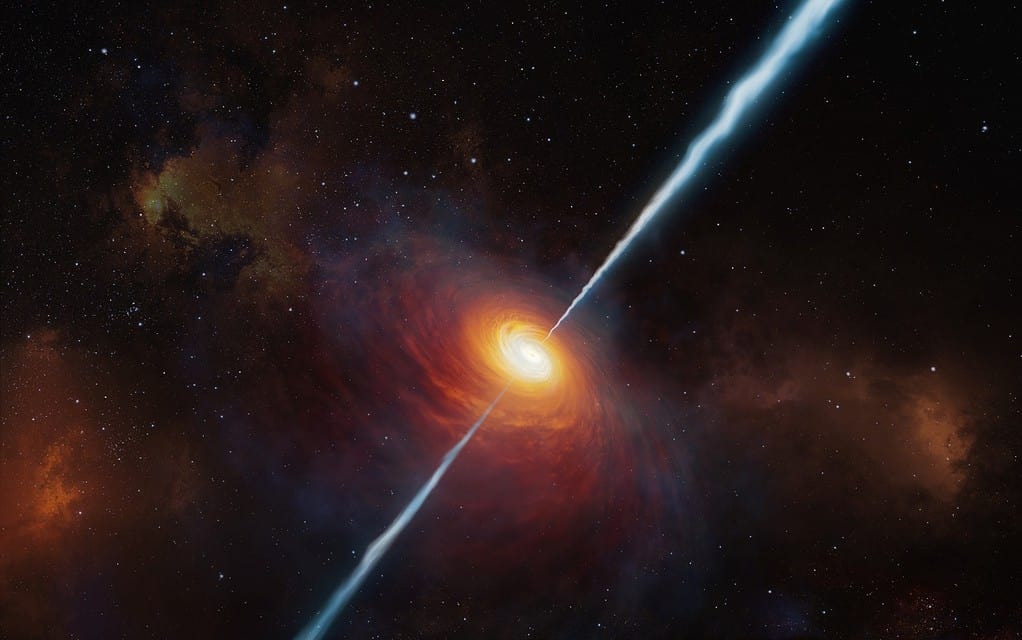
The Universe is full of mysteries, but the quasar is one of the most intriguing. These incredibly powerful objects were first discovered over 60 years ago and have been a source of fascination for astronomers ever since.
Quasars can shine as brightly as a trillion stars packed into a volume the size of our Solar System. But until now, it has remained a mystery what could trigger such powerful activity.
Now, scientists at the Universities of Sheffield and Hertfordshire have unlocked one of the biggest mysteries by discovering that quasars are ignited by colliding galaxies.
The study is the first time a sample of quasars of this size has been imaged with this level of sensitivity. By comparing observations of 48 quasars and their host galaxies with images of over 100 non-quasar galaxies, researchers concluded that galaxies hosting quasars are approximately three times as likely to interact or collide with other galaxies.
“Quasars play a key role in our understanding of the history of the Universe, and possibly also the future of the Milky Way,” said Jonny Pierce, post-doctoral research fellow at the University of Hertfordshire.
Most galaxies have supermassive black holes at their centers, which contain substantial amounts of gas. However, most of the time, this gas is orbiting at large distances from the galaxy centers, out of reach of the black holes.
Collisions between galaxies propel the gas toward the black hole at the galaxy’s center. Just before the black hole consumes the gas, it emits enormous amounts of energy in the form of radiation, resulting in the quasar’s characteristic brilliance.
The ignition of a quasar can have dramatic consequences for entire galaxies. It can drive the rest of the gas out of the galaxy, preventing it from forming new stars for billions of years. As such, this finding significantly impacts our understanding of how galaxies form and evolve.
Quasars are important to astrophysicists because, due to their brightness, they stand out at large distances and therefore act as beacons to the earliest epochs in the history of the Universe. Quasars play a key role in our understanding of the history of the Universe, and possibly also the future of the Milky Way.
Clive Tadhunter, professor of the University of Sheffield’s Department of Physics and Astronomy, reminds us that Earth won’t be anywhere near one of these apocalyptic episodes any time too soon.
“Quasars are one of the most extreme phenomena in the Universe, and what we see is likely to represent the future of our own Milky Way galaxy when it collides with the Andromeda galaxy in about five billion years,” Tadhunter said. It’s exciting to observe these events and finally understand why they occur – but thankfully Earth won’t be anywhere near one of these apocalyptic episodes for quite some time.”
The study was published in Monthly Notices of the Royal Astronomical Society.


